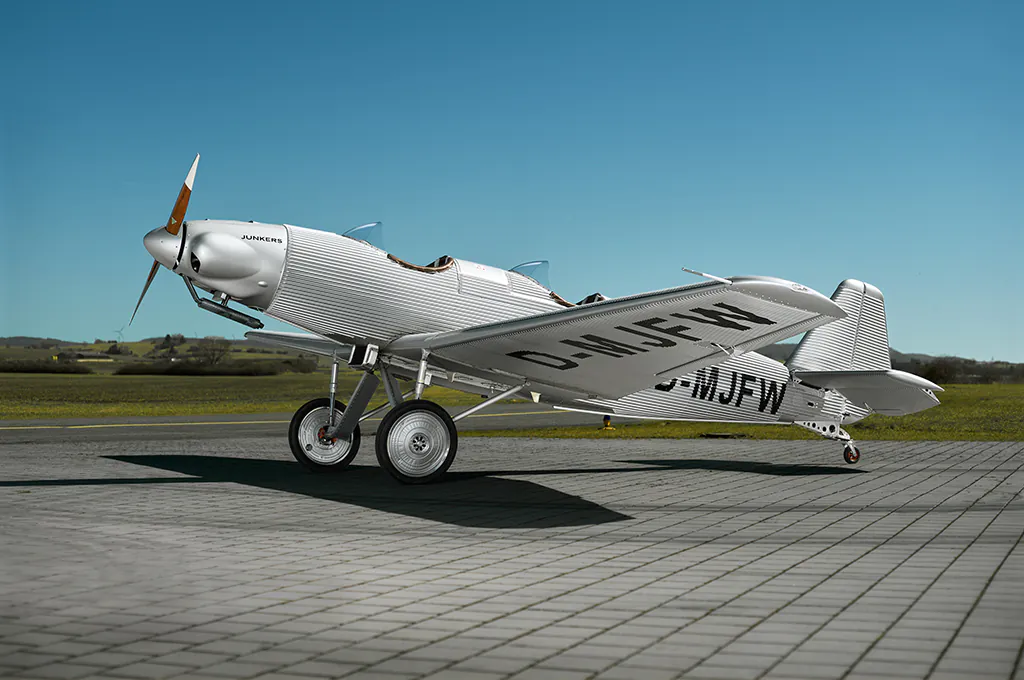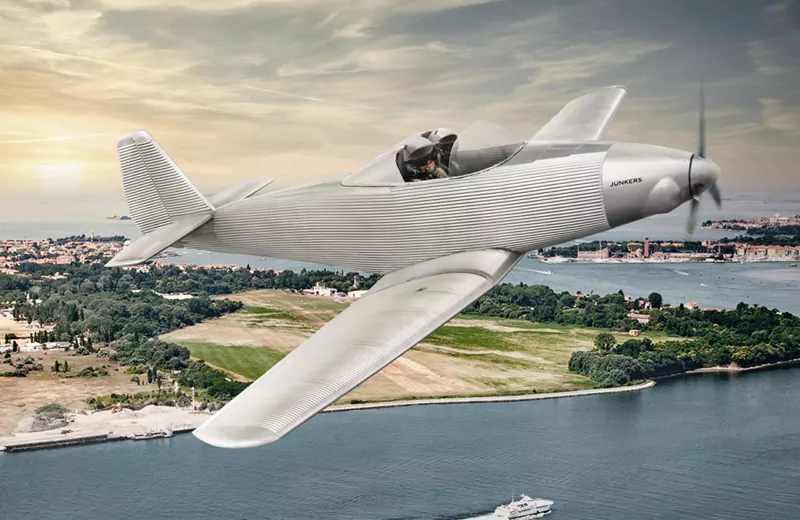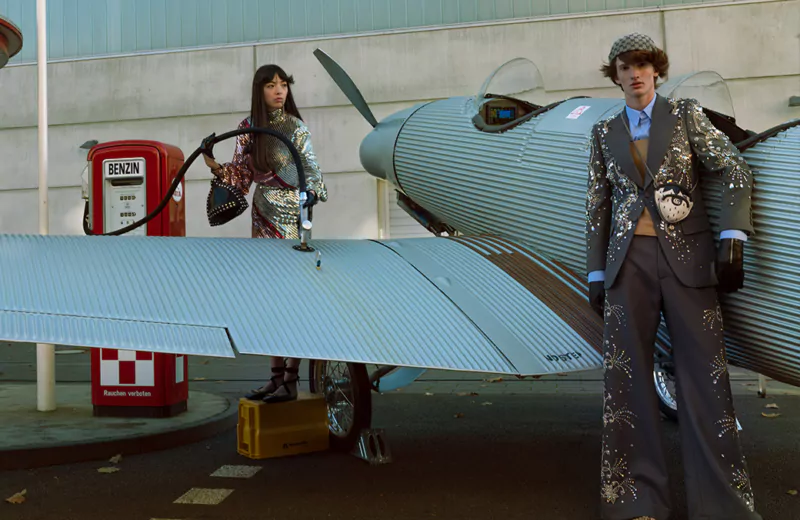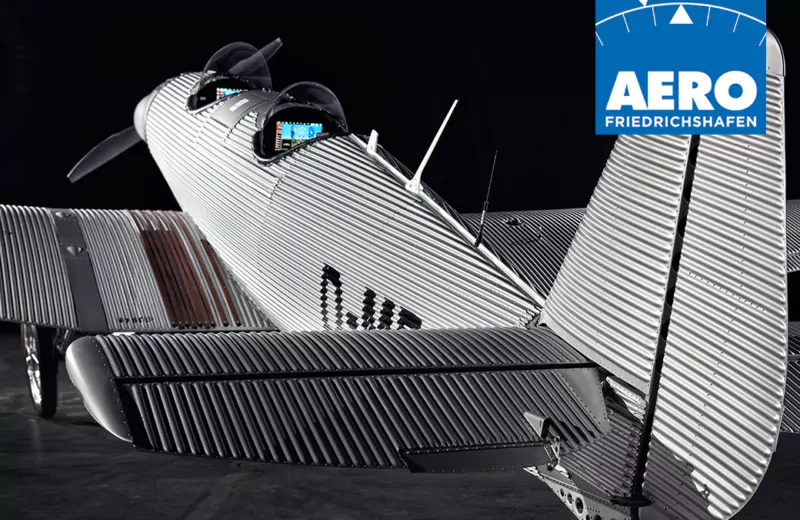Owning your own airplane is a childhood dream for many people. And with an ultralight aircraft, this dream is within reach. For beginners in particular, this is the easiest way to experience the freedom of flying – without the otherwise high hurdles of classic private aviation. But what should you look out for if you want to take up microlight flying?
Many beginners ask themselves this question – and that’s exactly why we have compiled the most important points for you here in a compact format.
Have fun discovering and immersing yourself in the world of microlight aircraft!
What exactly is an ultralight aircraft?
Ultralight aircraft – ULs for short – are single or two-seater sports aircraft with a maximum take-off weight of 600 kg. They are light, easy to handle and amazingly powerful. With cruising speeds of 130 to 250 km/h and ranges of up to 1,000 km, they open up an astonishing number of possibilities.
Why microlights are ideal for beginners:
- Easy handling – ULs are beginner-friendly and easy to fly.
- Lower costs – both for purchase and operation.
- Manageable training – fewer flying hours than for the classic private pilot’s license.
- Pure flying experience – ultralight flying means enjoying freedom and feeling the fascination of aviation first hand.
The way to an UL license
If you want to fly an ultralight aircraft, you need a sports pilot license for UL. The training is clearly structured and easy to master, especially for beginners.
The most important key points:
- Minimum age: 16 years, license from 17
- Medical fitness certificate (Medical LAPL) – a simple health check
- Around 60 hours of theory (aerodynamics, navigation, meteorology, aviation law)
- At least 30 hours of flying practice
- Total costs: around € 5,000 to € 7,000
Many flying schools in Germany offer trial flights. This allows interested parties to check whether microlight flying is really their hobby before they start training.
Buying an ultralight aircraft – what does it cost?
The question of the cost of ultralight aircraft arises for every beginner. Basically, ULs are considerably cheaper than larger aircraft, but the price range here is also wide.
- New aircraft: from around €60,000 – high-end models can cost significantly more.
- Used aircraft: from approx. 20,000 € – often a solid start with good maintenance.
- Charter: from 100-150 € per hour – ideal to remain flexible.
Whether new or used, it is crucial that the technology and maintenance history are correct. It is worth taking a close look at the logbook and the inspections – or taking an experienced UL pilot with you to inspect the aircraft.
Running costs and insurance
In addition to the purchase costs, beginners should be aware of the running costs. First of all. Maintaining an ultralight aircraft is cheaper than many people think:
- Hangar space or outdoor shelter: 100-300 € per month
- Fuel: 15-25 € per hour, mostly standard car gasoline
- Maintenance & inspection: around €1,000-2,000 per year
- Ultralight aircraft insurance: from approx. 300 € per year (third party liability is compulsory, hull optional) If you take passengers with you, you also need passenger liability insurance.
Safety – what beginners should know
Modern ULs are equipped with a high level of safety technology. In Germany, an overall rescue system is mandatory – a parachute that gently brings the entire aircraft to the ground in an emergency.
There are also useful extras such as transponders, modern radios and glass cockpits, which help beginners in particular to keep an overview. However, it is always important to prepare for the flight: check the weather, adhere to weight limits and plan for sufficient fuel.
Or in other words: Those who fly responsibly benefit from a very high level of safety.
Where do I store my UL?
After all, an UL is not always in the air – and that’s precisely why you should consider early enough where the aircraft will be parked and maintained.
- Home airfield with hangar space – the most convenient solution.
- Association community – often cheaper and with a lot of exchange of experience.
- Joint ownership – several pilots share the aircraft and costs.
Some ULs can even be trailered and stored in a large garage. In practice, however, most pilots opt for the classic hangar space at the airfield.
Nostalgia meets modernity
Some pilots don’t just want to fly, they also want to experience history. This is where the Junkers A50 Junior sets standards: inspired by the legendary sports planes of the 1920s, the open two-seater combines elegant vintage design with state-of-the-art technology and safety standards. For beginners who want to combine style and emotion with safety, the A50 Junior is a very good choice.
Latest technologies
If you want to rely on state-of-the-art solutions right from the start, the Junkers A60 is the latest generation of ultralight aircraft. All-carbon construction, digital avionics and a high-performance glass cockpit make the A60 an innovative touring aircraft – efficient, comfortable and future-oriented. This makes it the right choice for anyone who wants to combine their first steps in the UL sector with technology at the highest level.
Conclusion
An ultralight aircraft offers beginners the perfect bridge to private flying. The costs are manageable, the training practical and the safety high. If you start well prepared, you will enjoy unforgettable moments in the air.
Would you like to turn your dream of flying into reality? Visit Junkers Aircraft and discover models such as the Junkers A50 Junior or the Junkers A60. Both offer a unique combination of tradition and innovation. Arrange your consultation or test flight today and take off with us.
FAQ – Frequently asked questions from UL beginners
What should I pay particular attention to when buying an ultralight aircraft?
When buying an ultralight aircraft, you should first and foremost check the technology and documentation. Make sure you have a complete maintenance history, valid inspection certificates and a clean logbook. Don’t be dazzled by supposed bargains – a well-maintained aircraft with a clear history is the better choice in the long term. If possible, take a test flight with an experienced pilot. This will allow you to see immediately whether the engine, instruments and flight characteristics are in order.
What licenses and requirements do I need to fly UL?
To fly microlights, you need a microlight pilot’s license, officially known as a “Sportpilotenlizenz UL”. The requirements are: Minimum age 16 (license from 17), a medical (LAPL class) and a background check according to §7 LuftSiG. The cost of a license for an ultralight aircraft in Germany is between €5,000 and €7,000. If you already have another license (e.g. gliding or PPL), training hours can be credited.
How long does it take before I can fly microlight on my own?
This often happens faster than expected: After around 15-20 flying hours, most students are ready for their first solo flight – for many the most moving moment of their training. It usually takes a total of 6-12 months to get your sports pilot’s license. Those who train intensively can also finish faster. The important thing is to take your time and learn to enjoy microlight flying step by step.
Do I need my own microlight right after I get my license?
No, that is not necessary. Many pilots initially charter ULs from their school or a club. Depending on the model, the costs are around €100-150 per hour. This allows you to try out different types and gain experience without immediately having to take responsibility for maintenance, insurance and storage space. When you realize that you fly more often, the desire to own your own microlight will grow all by itself.
Where can I park my UL aircraft?
Most pilots opt for a hangar space at their home airfield. The cost of ultralight aircraft storage/hangar space is between €100 and €300 per month. Alternatively, there are shared hangars in clubs or owner associations where several owners share one aircraft.
Is ultralight flying safe enough?
Yes – with modern technology, good training and responsible flying, ultralight flying is a very safe hobby. Every UL licensed in Germany has a rescue system, and many are also equipped with a transponder, radio or glass cockpit. However, the pilot himself is always the decisive factor: If you respect weather limits, take the maintenance of your ultralight aircraft seriously and regularly refresh your knowledge, you minimize risks.



